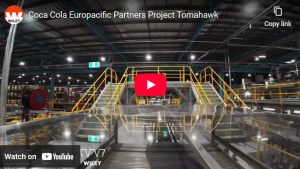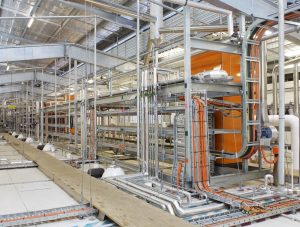
- Industry Type: Industrial Manufacturing, Refurbishment, Logistics, Food Processing
- Author: Andrew Newby
- Service Area: Advice
- Date: 27 Jul 2011
PLANNING YOUR COMPANY’S GROWTH
Food companies operate within a competitive and dynamic market place where the challenge is to continually develop new innovative product shapes, flavours and exciting packaging.
Many successful niche companies have either grown into or been acquired by multinational companies, expanding or consolidating at the right time. The goal for management is to recognise when their company is deliberately ‘pushing’ through one of these transition points, or when the market demand for their product is ‘pulling’ their company through a transition point.
Prior to moving through each transitional point, careful planning should be considered ranging from the Implications of planned growth on market positioning to Sustainability.
GROWTH INVARIABLY MEANS CHANGE
To remain competitive in today’s markets, many companies are identifying the need to expand product range, add product value for their customers or increase production volumes. These changes can bring complex challenges regarding the upgrading of equipment, process flows, operational facility and the possible requirement of expansion or relocation.
When planning growth, careful internal planning and the sourcing of external expertise should be part of the early feasibility phase.
CONSIDERATIONS FOR ASSESSING A TRANSITIONAL CHANGE
Facility and Production Processes
Master planning of your facility and land requirements to suit the new business case, is important. As the company extends from the small niche manufacturer through to a multinational requiring multiple sites, challenges of equipment suitability, inventory control, supply chains, logistics, sustainability and SKU rationalisation become more complex.
Many take the costly approach, particularly when moving operations to another region, of considering land, followed by facility requirements, then the process and production flows and finally consolidation of equipment.
It is optimal to invest the time initially to research the equipment and processes required to suit the business case, followed by the review of the facility and land requirements.
As waste volumes increase, recycling and treatment becomes a critical issue. Sustainability initiatives such as rain water harvesting, cogeneration, energy efficiencies and packaging covenants requires expertise to ensure smooth transition and compliance. Seeking external expertise during the master planning phase will reduce many unforeseen risks and costs and achieve profitable, money-saving results.
People
As product range increases and volume outputs grow, a more comprehensive approach is required in the feasibility stage and during the implementation of changes. The requirement for internal specialist knowledge increases to ensure a smooth upgrade of process equipment, process flow, complex logistics and storage. Meeting stringent food industry regulations becomes more complex and this may require internal collaborating with external expertise to ensure compliance.
Safety
In a small operation, production volumes are usually low and tasks are often manual. As product range expands and volumes increase, either the workforce increases or there is the opportunity for automation. Automated or manual production lines can increase risks significantly and may involve repetitious work practices. The requirement for stringent safety management becomes crucial as the company grows.
Capital and Business Systems
For a small company, the success of an expansion project can be critical to the company’s survival. Every dollar counts. As the number of stakeholders grows, accountability is essential. Justifying the feasibility of an expansion or upgrade project becomes more complex and requires stricter governance.
Many companies have the internal expertise regarding the operational aspects to develop a solid business case for the project. However, they may not possess the internal engineering expertise to design cost-efficient facilities or process flow requirements to a level suitable for board or shareholder approval.
The business systems required for a small operation will not make the grade for a multinational. The development of ‘global’ engineering design standards will help to standardize multiple sites as the company grows.

The diagram shown above provides a great tool to identify where your business is located and the changes that are needed to progress to the next production level.
The methodology of this exercise can be applied to your own business case in either confectionary or mainstream food markets. The most important step is to recognise the inter-dependence between process and production levels when planning growth.
The key to growth can often be less about what needs to change in your business, but instead be more about knowing when and how exactly to make your move.
About the author
Andrew Newby is the Business Development Director at Wiley and can be contacted on 1300 385 988 or email connect@wiley.com.au.
This article was published in Food & Drink Business Magazine.
Download to read full article
To read this document you will need Adobe Reader


